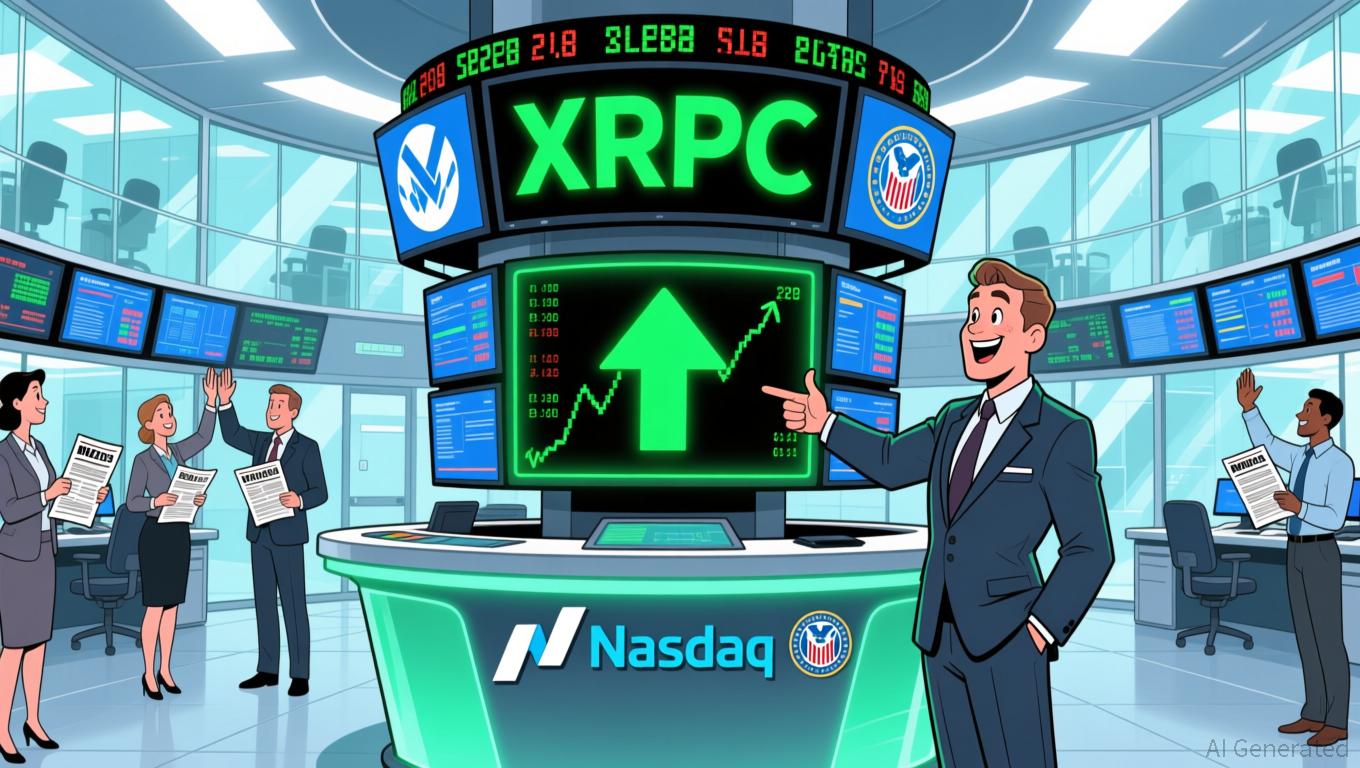SEC's Token Classification Seeks to Harmonize Innovation with Safeguarding Investors
- The SEC proposes a token taxonomy under the Howey Test to classify digital assets as securities or non-securities, reshaping crypto regulation. - The framework categorizes tokens into four tiers, including securities, digital commodities, collectibles, and tools, with exemptions for non-SEC-regulated platforms. - It aligns with the Digital Asset Market Structure Bill, which assigns major cryptocurrencies to CFTC oversight and mandates exchange function separation. - The SEC emphasizes strict enforcement
The U.S. Securities and Exchange Commission (SEC) is moving forward with efforts to create a "token taxonomy" based on the Howey Test, with the goal of clarifying which digital assets are considered securities and which are not subject to its oversight. During a speech at the Federal Reserve Bank of Philadelphia's Fintech Conference on November 12, SEC Chairman Paul Atkins introduced a four-level classification system intended to separate securities tokens from non-securities tokens—a development that could significantly impact crypto regulation, as
Atkins explained that the taxonomy would sort tokens into several categories: digital commodities or network tokens linked to decentralized platforms, digital collectibles such as art or in-game assets, digital utilities like memberships or event tickets, and tokenized securities that represent financial stakes. Only the last group—tokens that function as investment contracts—would continue to fall under securities laws, while the rest would be exempt, according to a
An important feature of the plan is the acknowledgment that tokens initially sold as securities might lose that status as projects become more decentralized and the issuer's involvement decreases.

The proposed framework also provides exceptions for certain tokens, permitting them to be traded on platforms regulated by the Commodity Futures Trading Commission (CFTC) or by state authorities, rather than limiting them to SEC-supervised exchanges. Atkins maintained that this would encourage technological advancement while still protecting investors. "We shouldn't restrict innovation and investor options by forcing assets to trade only in a single regulatory setting," he stated, according to a
This initiative works alongside broader legislative measures in Congress, such as the Digital Asset Market Structure Bill, which aims to clearly define the regulatory responsibilities of the SEC and CFTC. The bill, which is currently under consideration in both the Senate and House, would designate leading cryptocurrencies like
Atkins made it clear that the taxonomy does not indicate a relaxation of enforcement. He warned that fraudulent activities and market manipulation would continue to be met with strict consequences, reaffirming the SEC's dedication to "integrity and clarity" in the digital asset sector, as mentioned in a
Industry participants have responded positively, viewing the move as progress toward clearer regulations. By introducing a well-defined framework, the SEC seeks to strike a balance between fostering innovation and safeguarding investors—a challenge that has been central to crypto regulation from the start. The adoption of this taxonomy could also set a precedent for international standards, as other countries face similar classification challenges.
Disclaimer: The content of this article solely reflects the author's opinion and does not represent the platform in any capacity. This article is not intended to serve as a reference for making investment decisions.
You may also like
JPMorgan's Optimistic Move: Circle's Stablecoins Drive the Future of International Finance
- JPMorgan analysts upgraded Circle (CRCL) to "buy" with a $150 target, citing stablecoin growth and institutional adoption. - USDC's Q3 2025 circulation hit $67.9B, highlighting Circle's undervaluation vs. Tether's $500B private valuation. - Circle launched an institutional FX engine and multi-currency stablecoins to modernize global transactions. - Q3 revenue surged 66% to $740M, but USDC's $76B market cap lags Tether's $184B. - Strategic blockchain initiatives align with $5T AI-driven infrastructure inv
ICP Value Jumps 30% Following Network Enhancements and Growing Institutional Interest
- ICP's 30% price surge in late 2025 driven by AI-powered upgrades and institutional partnerships with Microsoft/Google Cloud. - Caffeine tool and cloud integrations boost scalability but face regulatory risks from SEC scrutiny. - Speculative trading (261% rise) contrasts with declining DApp usage (22.4% drop), highlighting adoption challenges. - Long-term success depends on technical execution, enterprise adoption, and regulatory clarity amid market volatility.

XRP Update Today: The Introduction of XRP ETFs and Silver Investments Signals a Shift Toward Overlapping Asset Classes
- XRP surged over 10% as anticipation grows for its first spot ETF, potentially launching this week, with regulatory filings and DTCC listings signaling imminent approvals. - Market dynamics show $4.11B in XRP derivatives open interest and $10.7M in 24-hour liquidations, while Trump's "tariff dividend" and government shutdown avoidance boost risk-on sentiment. - Institutional investors are also buying silver producer First Majestic Silver Corp. (AG), with Jupiter Asset Management acquiring a $74.5M stake a

XRP News Today: Regulatory Cooperation Sets the Stage for XRP ETF Milestone
- Canary XRP ETF (XRPC) becomes first U.S. spot XRP ETF, launching Nov 13, 2025 after SEC approval. - Regulated structure bypasses 1940 Act rules, enabling direct XRP exposure with 0.5% management fee. - Institutional demand and crypto-friendly regulators accelerated approval, mirroring Bitcoin ETF success. - ETF's index linkage and custody framework enhance XRP liquidity, signaling broader institutional adoption. - Multiple XRP ETFs in pipeline highlight token's maturation as regulated digital asset class.
